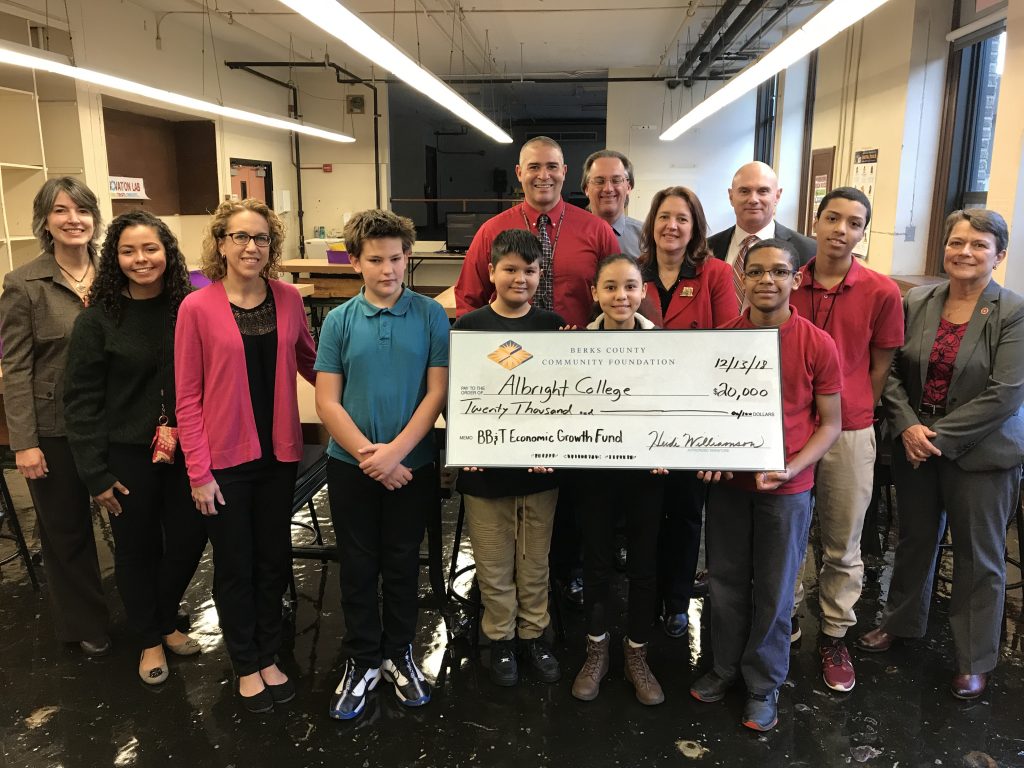Reading, PA – David Roland, president of BB&T’s Berks County/Northern Montgomery County market, presented a $20,000 check from the BB&T Economic Fund of Berks County Community Foundation to students and staff of Northeast Middle School and Albright College on Thursday, Dec. 13, for Albright’s 13th Street Educational Partnership STEM initiatives.
At Northeast Middle School, a former shop is being converted into a new STEM lab. Old equipment has been removed from the area, and two teachers key to the project, Shellie Sheidy and Megan Sheeler, have been creating relevant programming for all 6th and 7th graders. BB&T’s funds will be used to build the school’s foundational STEM curriculum. In addition, Andrew Pochan, a local artist and Albright College instructor, is designing a STEM lab mural that will be painted by Northeast and Albright students.
“BB&T has a strong commitment to supporting economic development in the markets in which it operates,” said Roland. “One of the biggest challenges to the continued growth and vitality of businesses in those markets is attracting and retaining qualified applicants for a wide spectrum of job opportunities. Filling jobs that have a strong science, technology and math component presents an even more acute challenge. Our grant of $20,000 from the BB&T Economic Growth Fund through Albright College to benefit the STEM education opportunities at Northeast Middle School was aimed at supporting a program in place that represents a start to doing just that … working to get kids exposed to and interested in STEM education. We hope that the support represents a small part in preparing them for their futures in a constantly changing world and an ever more technical job market.”
Principal Alex Brown said that Northeast’s Innovation Lab and STEM programming has evolved through discussions with teachers and administration about more intentional integration of science, technology, engineering and math (STEM) learning throughout the building for all 900 6th and 7th grade students.
“Such learning opportunities had, for the most part, been exclusive to the gifted students who competed in various STEM contests and activities around the county,” explained Brown.
In November, teams of students used the lab for the first time — for an engineering design challenge that involved using straws, one foot of saran wrap, one foot of duct tape, and a modified cup to create a watercraft that could stay afloat for 10 seconds while being weighed down by 15 washers.
Moving ahead, teachers will also focus on 21st century skills that prepare students to be successful members of today’s workforce, including scientific literacy, perseverance, problem solving, critical thinking and teamwork.
“The intent is to encourage creativity and emphasize skills necessary for future jobs,” said Brown.




